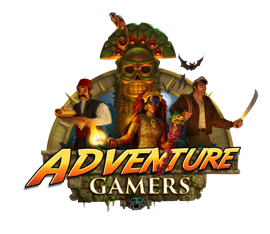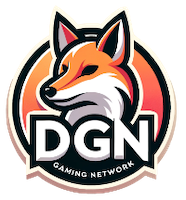Review for Little Big Adventure – Twinsen’s Quest
In 1994, Bill Clinton played the saxophone for Boris Yeltsin, Kurt Cobain bowed out, Nine Inch Nails released "The Downward Spiral", Ayrton Senna died in a bend at Imola – and two months before Sony's launch of the brand-new PlayStation console, a small studio from Lyon, France, released its first game. Consisting mainly of the former developers from the grandfather of survival horror, Alone in the Dark (with Frédérick Raynal in the lead), Adeline Software was offered carte blanche to develop a particularly unusual and singular proposal.
Released under the title Little Big Adventure in Europe and Relentless: Twinsen’s Adventure in the US, Frédérick Raynal’s new game offered an original universe on the borders of two worlds. On the one hand, the design, conceptualized by the artist Didier Chanfray, was singularly childlike; the characters were colorful with round shapes and strong anthropomorphism. But on the other hand, the themes addressed vacillated erratically between totalitarianism, Soviet bloc architecture, and dialogues that were sometimes crude and satirical, foreshadowing the "French touch" of certain video games from the 90s.
But the underlying reasons that earned Little Big Adventure critical and public acclaim when it was released in 1994 were, above all, its playful offerings. Just as hybrid in its universe as in its design, the game presented a vast open world, the planet Twinsun led by the dictator FunFrock (whose design was possibly inspired by the strong man of the French extreme right at the time, Jean-Marie Le Pen). At the helm: the hero of our story – Twinsen – a young “Quetch” who turns out to possess unusual powers and discovers his destiny during his long odyssey. Concretely, the player evolved in a world represented in isometric 3D (drawing its inspiration from Alien 8, the Stamper brothers' game released on ZX Spectrum in 1985) which offered a development that could be compared to Zelda 3 – a link to the past but with a more systemic, radical, and less structured approach. As with Alone in the Dark, Little Big Adventure's playful proposition was based on both action specific to classic action games but also more traditional point-and-click adventures. Twinsen had to discuss and interact with as many characters as possible to know the objectives of his epic mission and to understand the mysteries that surrounded him while exploring the different islands that made up the world of Twinsun.
Appreciated for the fresh air that it breathed into the rigid genres of video games, Little Big Adventure offered freedom of action and an openness that was still very rare in the first part of the 90s – a freedom which became one of the pivots of open worlds more than a decade later. In 1997, a sequel was developed by the same small team led by Frédérick Raynal. It rounded out the slightly rough playful angles of the first episode, particularly in the control of the character and in the radicality of certain choices (saves, devious enemies, etc.), making the experience more accessible and mostly more pleasant, as the team had originally planned.
When the small studio [2:21], freshly created for the occasion took over the rights to the license in 2021, the ambition was to create a new opus. But the reality of the market gradually oriented the team, made up of veterans (graphic designer Didier Chanfray, musician Philippe Vachey, and programmer Sebastien Vianney) and newcomers (writer Samantha Bailey and artist Paulo Torrino) to undertake a remake to suit current tastes. The project was finally signed by the French publisher Microids and work began in early 2023.
The whole difficulty of a remake and/or remaster exercise is to identify its ambitions. That of Little Big Adventure – Twinsen's Quest, as it was named for the occasion, was to rigorously preserve the structure and flow of the original game while rounding out the angles, particularly concerning the thorny question of character controls, but also to offer visuals adapted to current standards. As such, without further ado, the verdict is very favorable – the result follows these specifications to the letter. From the first screens, the graphics are brilliant. The new artistic direction, while respecting the colorful and naive spirit of the original game, offers a very successful and absolutely charming pastel result. The screen teems with animation that emphasizes contrasts, such as subtle weather effects, flights of birds, or lush vegetation. Gone is the succession of tables in which Twinsen evolved screen by screen in 1994. The remaster offers a linear and continuous progression of the confusing map and thus emphasizes the immensity of its playing field, even if this means getting lost quickly.
Another concession in the face of the ravages of time, Twinsen's controls have been greatly simplified. The 1994 original was complicated, offering four different stances (normal, sporty, aggressive or discreet), however the remaster contains a fairly ideal and rather intuitive mixed version. Likewise, the “tank controls” are replaced by more classic handling of the character. On paper, everything is fine. In fact, if the overall experience is a thousand miles from the original game and its constraints, there is this little “new wallpaper stuck on an old wall” side that never leaves us. By modern standards, everything works so-so, but controlling Twinsen is never particularly enjoyable, especially when he must confront enemy soldiers with his magic ball. Combat quickly turns into hell; the collision and priority system still seems vintage but above all frustratingly indefinite. Our hero's jumps continue to be "floating" and imprecise, making the few platforming phases frustrating. Overall, it is the entire "action" part of the game which, in this remaster process, seems to fall somewhere in between – concessions have been made to make the game more playable, but there is a regrettable lack of polish and care in the details.
Overall, Little Big Adventure – Twinsen’s Quest will confront two very distinct types of audiences. On the one hand, there are those who have already experienced the adventures of our hero, whether on PC or PlayStation, and who know what “openness”, “freedom” and “die & retry” mean. And there are the others, who will approach the game like any action/adventure game with, and I quote Frédérick Raynal, “a big arrow that flashes to show you what to do and where to go”. Because what makes the strength and radicality of the experience offered by this game is that the player is catapulted into a world with fairly basic rules, but benefiting from its own logic that must be fully understood. And the tools to learn how to immerse yourself in this universe are VERY basic. A more or less clear notebook of objectives, plus a very imprecise map, and off we go. Let’s go Adventure! The first minutes, perhaps even the first hours of play can be extremely destabilizing, even discouraging by modern linearity and difficulty standards. In this, Twinsen's Quest is much closer to the traditional point-and-click adventure (Sierra examples spring to mind), inviting the player to search, listen, understand, and grab various items, rather than resorting to the more direct, smooth gameplay found in contemporary action-adventures. It forces the player to experiment and try things blindly, but because of its very approximate "action" dimension, it is not uncommon for a game session to transform into an incessant succession of failures, deaths and restore/saves. It is only once this is comprehended and accepted that this aspect of the game no longer becomes an obstacle to enjoying the best that Twinsen's Quest offers: a beautiful and fascinating adventure.
Because despite its visible seams, its sometimes poorly arranged threads, its chronic and occasionally annoying inaccuracies, there is this little something that vibrates deep down in Little Big Adventure – Twinsen’s Quest. Once the rules have been accepted and the game design of another time has been integrated, the very particular atmosphere of the title works its magic as it did thirty years ago. The progression of our little companion is exhilarating, the internal logic of this unique universe ends up winning us over and we let ourselves be carried away with genuine pleasure to the magnificently reorchestrated music of Philippe Vachey. The game flow is renewed in a surprisingly modern way and, above all, reveals the genius and pioneering aspect of the original game.
It is on this last point that Little Big Adventure – Twinsen’s Quest achieves an almost unexpected success. The remaster is a museum where each room, each piece highlights the extent to which adventure games have changed and evolved, and the extent to which Adeline Software was a pioneer in many respects. For those who knew the game of yesteryear, it is a nice way to return to wander on Twinsun. For players who are invited for the first time, the overall experience risks being more difficult, but if they go beyond appearances and rough workings, they will perhaps have the opportunity to discover one of the most delightful offerings in the history of adventure gaming.
(Warning: You may deduct two stars from the following rating if you thought you were buying a game like Zelda.)
WHERE CAN I DOWNLOAD Little Big Adventure – Twinsen’s Quest
Little Big Adventure – Twinsen’s Quest is available at:
We get a small commission from any game you buy through these links (except Steam).Our Verdict:
Little Big Adventure – Twinsen’s Quest beautifully captures the charm of the 1994 original with captivating visuals and a memorable soundtrack. However, clunky combat mechanics and imprecise controls hold back the remaster, making it a nostalgic journey best suited for returning fans.












_capsule_fog__medium.png)

















